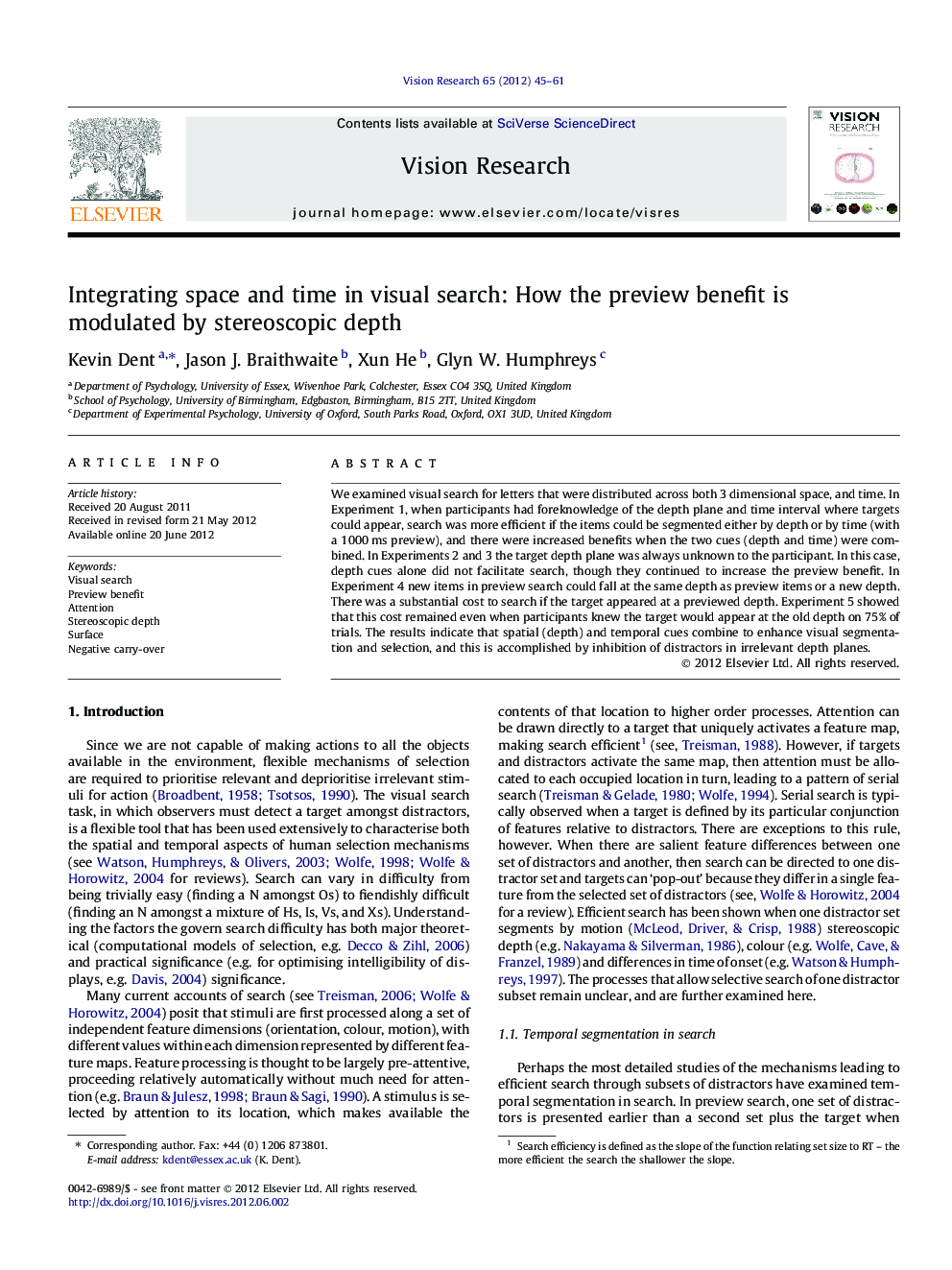| Article ID | Journal | Published Year | Pages | File Type |
|---|---|---|---|---|
| 4033939 | Vision Research | 2012 | 17 Pages |
We examined visual search for letters that were distributed across both 3 dimensional space, and time. In Experiment 1, when participants had foreknowledge of the depth plane and time interval where targets could appear, search was more efficient if the items could be segmented either by depth or by time (with a 1000 ms preview), and there were increased benefits when the two cues (depth and time) were combined. In Experiments 2 and 3 the target depth plane was always unknown to the participant. In this case, depth cues alone did not facilitate search, though they continued to increase the preview benefit. In Experiment 4 new items in preview search could fall at the same depth as preview items or a new depth. There was a substantial cost to search if the target appeared at a previewed depth. Experiment 5 showed that this cost remained even when participants knew the target would appear at the old depth on 75% of trials. The results indicate that spatial (depth) and temporal cues combine to enhance visual segmentation and selection, and this is accomplished by inhibition of distractors in irrelevant depth planes.
► We investigate how stereoscopic depth modulates the preview benefit in visual search. ► Search efficiency increased when preview and depth segmentation combined. ► Efficiency gains were present regardless of foreknowledge about target depth. ► Substantial costs resulted when the target appeared at the old ignored depth. ► 3-D stereoscopic surfaces constrain the deployment of inhibitory mechanisms in search.
